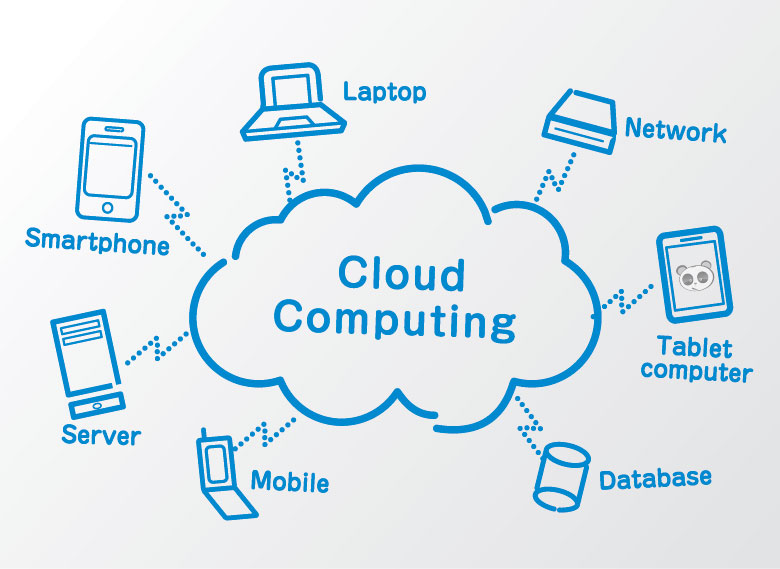The rapid and widespread adoption of cloud computing has fundamentally transformed the technological landscape for businesses and individuals worldwide. The ability to leverage scalable computing resources, flexible storage, and powerful applications delivered over the internet offers unprecedented opportunities for innovation, efficiency, and cost savings. However, as data migrates from controlled, on-premises environments to the shared or distributed infrastructure of the cloud, a paramount concern takes center stage: data security in cloud computing. Protecting sensitive information – from personal data and financial records to intellectual property and operational intelligence – is not merely a technical challenge but a critical business imperative, driven by regulatory mandates, reputational risk, and the potential for devastating financial losses in the event of a breach. Data security in cloud computing involves the implementation of policies, controls, procedures, and technologies to protect cloud-based data against theft, leakage, and compromise. It requires a nuanced understanding of the unique security model of the cloud, the specific cloud security challenges that arise, and the effective measures needed to safeguard data throughout its lifecycle in the cloud environment. This comprehensive guide will define data security in cloud computing, explain why it is more critical than ever in the modern digital era, discuss the key cloud security challenges faced, detail the foundational shared responsibility model cloud providers and customers operate under, outline essential technical and procedural cloud security best practices, and explore strategies for cloud compliance, cloud data governance, and continuous efforts for protecting data in the cloud.
Toc
Understanding the Imperative: Data Security in Cloud Computing

As organizations increasingly embrace the flexibility and scalability offered by cloud platforms, the focus shifts from managing physical infrastructure to managing the security posture within a virtualized, shared environment. Data security in cloud computing becomes the central challenge, requiring a clear understanding of what needs protection and why the approach to security must adapt to the unique characteristics of the cloud.
Defining Data Security in Cloud Computing: Protecting Information in the Cloud Era
Data security in cloud computing refers to the set of practices, technologies, and policies employed to protect digital data stored, processed, and transmitted within cloud environments. This includes safeguarding data from unauthorized access, modification, deletion, or disclosure. It encompasses protecting data not only when it is stored (“data at rest”) but also when it is being moved across networks (“data in transit”) and when it is being actively processed or used (“data in use”). Unlike traditional data security, where an organization controls the physical access to servers and networking equipment in its own data center, data security in cloud computing involves trusting a third-party cloud provider with the underlying infrastructure while maintaining responsibility for securing the data itself within that provider’s environment.
Effective data security in cloud computing requires implementing controls across various layers, including identity and access management to control who can access data, encryption to render data unintelligible to unauthorized parties, network security to protect communication pathways, and robust monitoring and logging to detect suspicious activity. It’s a proactive approach focused on preventing data breaches, ensuring data integrity, and maintaining data availability in the cloud. The specific measures and responsibilities involved in protecting data in the cloud are often defined by the nature of the cloud service model being used (IaaS, PaaS, SaaS) and, fundamentally, by the shared responsibility model cloud providers and customers adhere to. Defining data security in cloud computing is about establishing and maintaining the necessary safeguards to ensure the confidentiality, integrity, and availability of information entrusted to the cloud.
Why Cloud Data Security is More Critical Than Ever

The criticality of cloud data security has escalated significantly in the modern digital era due to several converging factors. The sheer volume and sensitivity of data being migrated to the cloud, combined with an increasingly sophisticated threat landscape and growing regulatory demands, make robust data security in cloud computing an absolute necessity.
Organizations are moving vast amounts of highly sensitive data to the cloud. This includes Personally Identifiable Information (PII) of customers and employees, financial records, confidential health information (PHI), proprietary business strategies, intellectual property, and critical operational data. The compromise of this data through a cloud security incident can have severe consequences, far exceeding the technical inconvenience of a system outage.
Regulatory requirements around data protection are becoming increasingly stringent and globally enforced. Regulations like the GDPR in Europe, HIPAA in the U.S. (for health data), CCPA in California, and various data residency laws around the world impose strict obligations on organizations regarding how they collect, process, store, and protect personal data. Failure to comply with these regulations, particularly concerning data security in cloud computing, can result in significant financial penalties, legal action, and mandatory breach notifications, all of which underscore the imperative for strong cloud data security.
Furthermore, the financial and reputational costs of a data breach are immense. A cloud security incident can lead to direct costs such as investigation, remediation, legal fees, and regulatory fines, as well as indirect costs such as lost business, damage to brand reputation, and loss of customer trust. The interconnected nature of cloud environments means a single misconfiguration or vulnerability could potentially expose large volumes of data. Consequently, investing in and prioritizing data security in cloud computing is not just about protecting data; it’s about protecting the organization’s financial stability, legal standing, and public image in an environment where data is a most valuable asset. The elevated stakes make robust cloud data protection essential.
Key Cloud Security Challenges When Entrusting Data to the Cloud

Migrating data to the cloud introduces a new set of cloud security challenges that differ from those encountered in traditional on-premises environments. While cloud providers offer a secure underlying infrastructure, managing security within the cloud requires addressing these unique hurdles to ensure data security in cloud computing.
One significant challenge is the shared infrastructure inherent in cloud computing. In multi-tenant cloud environments, different customers’ data and applications reside on the same physical infrastructure (servers, storage devices). While providers employ virtualization and isolation technologies to segregate customer data, the shared nature requires vigilance and robust controls by both the provider and the customer to prevent any potential cross-tenant data leakage or access. Ensuring effective isolation and security in this shared environment is a key aspect of cloud security.
Data residency and location concerns present another challenge. With a global network of data centers, cloud providers store data in specific geographical regions. However, organizations must ensure that their data resides in locations that comply with legal and regulatory requirements (e.g., data must not leave the EU, or must be stored within national borders). Managing data placement and transfer across different cloud regions to meet these cloud compliance needs is a complexity unique to data security in cloud computing.
Managing cloud access control can also be challenging. In dynamic cloud environments, resources are provisioned and de-provisioned rapidly, and users (employees, contractors, automated processes) require access to different services. Implementing granular cloud access control policies using Identity and Access Management (IAM) to ensure users have only the minimum permissions necessary (“least privilege”) and preventing unauthorized access to sensitive data requires careful configuration and continuous monitoring in cloud security. Mismanagement of access credentials is a common cause of cloud breaches.
3. https://sanduocpham.com.vn/mmoga-understanding-the-foundation-what-is-aws-cloud-computing/
4. https://sanduocpham.com.vn/mmoga-exploring-the-definition-of-cloud-computing-what-it-truly-means/
5. https://sanduocpham.com.vn/mmoga-at-the-core-lets-define-cloud-computing/
Other cloud security challenges include the rapid pace of change in cloud service offerings (requiring security teams to constantly learn and adapt), potential vendor lock-in that could limit choices in security tools, and the complexity of integrating cloud security controls with existing on-premises security infrastructure. Successfully navigating these cloud security challenges requires specialized knowledge and a proactive approach to protecting data in the cloud, moving beyond traditional security mindsets to embrace the specific requirements of data security in cloud computing.
The Foundation of Cloud Security: Shared Responsibility and Core Measures

At the heart of managing data security in cloud computing lies a fundamental concept: the shared responsibility model cloud. Understanding this model is crucial for defining roles and implementing the essential technical and procedural measures necessary for robust cloud data protection.
The Shared Responsibility Model Cloud: Understanding Provider vs. Customer Roles
The Shared Responsibility Model Cloud is a critical concept that defines the distinct security obligations of the cloud service provider and the cloud customer. It clarifies that while the provider is responsible for the security of the cloud infrastructure itself, the customer is responsible for the security in the cloud environment they configure and utilize. This model is foundational to data security in cloud computing.
The Cloud Provider’s Responsibility (Security OF the Cloud): The cloud provider (e.g., AWS, Azure, Google Cloud) is responsible for protecting the global infrastructure that runs the cloud services. This includes the physical facilities (data centers), networking hardware, server hardware, storage hardware, and the software layer that virtualizes and manages these resources. The provider ensures the physical security of the data centers, the integrity of the network infrastructure, and the security of the virtualization software. This is their side of the Shared Responsibility Model Cloud for ensuring cloud security.
The Cloud Customer’s Responsibility (Security IN the Cloud): The customer is responsible for security within their cloud environment. This includes:
- Data Security: Protecting their data (cloud data protection), including encryption, backups, and data lifecycle management. This is the core of data security in cloud computing for the customer.
- Application Security: Ensuring their applications running in the cloud are secure, free from vulnerabilities.
- Operating System Security: Securing the operating systems running on virtual servers (if using IaaS), including patching, configuration, and access control.
- Network Configuration: Configuring virtual networks, subnets, firewalls (security groups, network access control lists), and routing within their cloud environment.
- Identity and Access Management (IAM): Managing user accounts, permissions, and authentication mechanisms to control who can access cloud resources and data (cloud access control).
- Client-Side Security: Protecting devices and systems used to access the cloud.
Understanding this Shared Responsibility Model Cloud is paramount. Many cloud security incidents occur not because the provider’s infrastructure was breached, but because the customer failed to correctly configure their security settings (e.g., leaving data storage publicly accessible, mismanaging access keys). Therefore, a clear grasp of the Shared Responsibility Model Cloud is the absolute starting point for implementing effective data security in cloud computing.
Essential Technical Measures: Cloud Data Encryption and Cloud Access Control
Implementing core technical security measures is vital for protecting data in the cloud within the customer’s domain of responsibility under the Shared Responsibility Model Cloud. Two fundamental measures are cloud data encryption and cloud access control.
Cloud Data Encryption: Encryption is the process of converting data into a code to prevent unauthorized access. It is a critical component of data security in cloud computing. Data should be encrypted in multiple states:
- Encryption at Rest: Protecting data when it is stored on physical media (like databases, storage volumes, object storage). Cloud providers typically offer services for encrypting data at rest using encryption keys managed by the provider or the customer. Even if the underlying storage media is compromised, the data remains unreadable without the key.
- Encryption in Transit: Protecting data as it moves across networks, such as between a user’s device and the cloud, or between different services within the cloud. This is typically achieved using protocols like TLS/SSL (for data over HTTPs) or VPNs.
Implementing robust cloud data encryption is essential for cloud data protection, ensuring that data remains confidential even if unauthorized parties gain access to the storage or network.
Cloud Access Control: Managing who has permission to access cloud resources and data is equally critical. Cloud access control, typically managed through Identity and Access Management (IAM) services provided by the cloud provider, involves defining and enforcing permissions. This includes:
- User and Group Management: Creating user accounts and organizing them into groups.
- Permissions Management: Defining policies that specify which actions users or groups are allowed or denied on specific cloud resources (e.g., read-only access to certain storage buckets, full control over a specific virtual server).
- Authentication: Verifying user identities, often requiring strong authentication methods like multi-factor authentication (MFA) to prevent unauthorized logins.
- Least Privilege Principle: Granting users only the minimum permissions necessary to perform their job functions, minimizing the potential impact of a compromised account.
Properly configuring and continuously reviewing cloud access control policies is paramount for preventing unauthorized access to sensitive data in the cloud computing environment, reinforcing data security in cloud computing.
Building a Secure Environment: Network Security and Configuration Cloud Security Best Practices
Beyond encryption and access control, building a secure environment for data security in cloud computing involves implementing strong network security and adhering to configuration cloud security best practices within the customer’s cloud infrastructure.
Network Security: Cloud providers offer virtual networking capabilities that mirror traditional data center networks. Implementing network security involves:
- Virtual Private Clouds (VPCs): Creating isolated virtual networks within the cloud provider’s infrastructure.
- Subnetting and Segmentation: Dividing the VPC into smaller, isolated subnets to limit the blast radius of a breach.
- Virtual Firewalls (Security Groups, Network ACLs): Configuring rules to control inbound and outbound network traffic to and from specific resources based on IP address, port, and protocol. This limits network access to only what is necessary.
These measures help protect the communication pathways to and between cloud resources.
Configuration Cloud Security Best Practices: A significant portion of cloud security incidents results from misconfigurations by the customer. Adhering to cloud security best practices for configuration is vital:
- Secure Defaults: Wherever possible, configure resources with secure default settings (e.g., storage buckets should not be publicly accessible by default).
- Regular Auditing: Continuously monitor and audit cloud resource configurations to identify and remediate misconfigurations. Cloud Security Posture Management (CSPM) tools can automate this.
- Patch Management: Ensure that operating systems and applications running on virtual servers are regularly patched to fix known vulnerabilities.
- Vulnerability Management: Regularly scan cloud resources for known vulnerabilities in software and configurations.
Implementing strong network security and adhering to configuration cloud security best practices within the customer’s side of the Shared Responsibility Model Cloud are fundamental to protecting data in the cloud and maintaining strong data security in cloud computing.
2. https://sanduocpham.com.vn/mmoga-understanding-the-foundation-what-is-aws-cloud-computing/
3. https://sanduocpham.com.vn/mmoga-understanding-the-role-of-cloud-computing-providers/
5. https://sanduocpham.com.vn/mmoga-exploring-the-definition-of-cloud-computing-what-it-truly-means/
Successfully achieving and maintaining data security in cloud computing involves more than just technical measures; it requires addressing regulatory compliance, implementing effective cloud data governance, and developing a comprehensive, proactive security strategy. Navigating this complexity is key to robust cloud data protection.
Meeting Requirements: Cloud Compliance and Cloud Data Governance
For many organizations, ensuring data security in cloud computing is inextricably linked to meeting specific legal, regulatory, and industry cloud compliance requirements. Simultaneously, establishing sound cloud data governance is essential for managing data effectively and securely throughout its lifecycle in the cloud.
Cloud Compliance: This involves ensuring that the organization’s use of cloud services and its data security in cloud computing practices meet the standards set by relevant regulations and frameworks. Examples include:
- GDPR (General Data Protection Regulation): Strict rules for protecting personal data of EU residents, including requirements for data security, consent, and data transfer.
- HIPAA (Health Insurance Portability and Accountability Act): U.S. law setting standards for protecting sensitive patient health information.
- PCI DSS (Payment Card Industry Data Security Standard): Requirements for organizations that handle credit card information.
- ISO 27001: An international standard for information security management systems.
Cloud providers offer certifications and tools to demonstrate their compliance with various standards at the infrastructure level (security of the cloud). However, the customer is responsible for ensuring their specific configuration, applications, and data handling practices in the cloud meet these cloud compliance requirements for their data.
Cloud Data Governance: This involves defining and implementing policies, procedures, and processes for managing and protecting data within the cloud environment. Cloud Data Governance ensures data quality, accessibility, usability, and most importantly, security and compliance throughout the data lifecycle (creation, storage, use, sharing, archival, deletion). It includes defining data ownership, establishing data classification schemes (e.g., classifying data as public, internal, confidential, restricted), implementing data retention and deletion policies, and ensuring accountability for data handling. Strong Cloud Data Governance is foundational to effective data security in cloud computing and helps organizations meet their cloud compliance obligations.
Strategies for Protecting Data in the Cloud: From Planning to Implementation
Developing and executing a comprehensive strategy is crucial for successfully protecting data in the cloud and ensuring robust data security in cloud computing. This involves planning before migration, implementing controls correctly, and fostering ongoing security awareness.
- Security-First Cloud Architecture Design: Integrate security considerations from the very beginning when designing your cloud architecture. Plan for network segmentation, secure access patterns, and encryption before deploying resources. Don’t treat security as an afterthought.
- Identity and Access Management (IAM) Strategy: Develop a robust IAM strategy based on the principle of least privilege. Define clear roles, groups, and permissions. Regularly review and update access policies. Implement strong authentication mechanisms, including MFA.
- Data Classification and Encryption Strategy: Classify your data based on its sensitivity. Implement appropriate cloud data encryption measures (at rest and in transit) based on the data’s classification and regulatory requirements. Understand how to manage encryption keys securely.
- Network Security Configuration: Properly configure virtual firewalls (security groups, network ACLs) to restrict network access to only what is necessary. Implement network segmentation within your VPCs to isolate sensitive data and applications.
- Continuous Monitoring and Logging: Implement robust logging and monitoring solutions to track activity within your cloud environment. Utilize security information and event management (SIEM) tools to analyze logs and detect suspicious behavior or potential security threats
- Security Awareness Training: Educate your employees and users on cloud security best practices, secure data handling procedures in the cloud, and recognizing phishing attempts or other social engineering tactics. Human error remains a significant security risk
Implementing these strategies is essential for building and maintaining a strong security posture and effectively protecting data in the cloud.
Continuous Improvement: Monitoring, Auditing, and Advanced Cloud Security Solutions
Data security in cloud computing is not a one-time setup; it is a continuous process that requires ongoing monitoring, regular auditing, and leveraging advanced cloud security solutions to adapt to the evolving threat landscape and changes in the cloud environment.
Continuous Monitoring and Auditing: Regularly monitoring activity within your cloud environment and auditing configurations and access policies is critical for detecting potential security incidents and ensuring compliance. Cloud providers offer logging services that capture API calls, resource changes, and network traffic. Analyzing these logs helps identify unauthorized access attempts, misconfigurations, or suspicious activity. Regular security audits, both internal and external, help assess the effectiveness of implemented controls against standards and identify potential weaknesses in cloud security.
Vulnerability Management and Patching: Regularly scan cloud resources (virtual servers, applications) for known vulnerabilities. Implement a consistent process for applying security patches to operating systems and applications running in the cloud to mitigate these vulnerabilities.
Incident Response Planning: Develop and regularly test a cloud-specific incident response plan. Know the steps to take in the event of a security incident, including detection, containment, eradication, and recovery within the cloud computing environment.
Advanced Cloud Security Solutions: Leverage specialized cloud security solutions to enhance your security posture. These can include:
- Cloud Security Posture Management (CSPM) tools: Help identify misconfigurations, compliance violations, and security risks in your cloud environment.
- Cloud Workload Protection Platforms (CWPP): Provide security for virtual machines, containers, and serverless functions.
- Cloud Access Security Brokers (CASB): Act as intermediaries between cloud users and cloud services, enforcing security policies and monitoring activity, particularly for SaaS applications.
By embracing continuous improvement, leveraging monitoring and auditing capabilities, and adopting advanced cloud security solutions, organizations can maintain a strong and adaptive security posture, ensuring robust data security in cloud computing environments and proactively addressing the ever-changing cloud security challenges.
In conclusion, data security in cloud computing is a critical imperative for any organization leveraging the power of the cloud. Protecting data stored, processed, and transmitted within cloud environments from unauthorized access, modification, or disclosure is essential due to the sensitivity of information, stringent regulatory requirements (cloud compliance), and the severe consequences of data breaches. Navigating cloud security challenges like shared infrastructure, data residency, and cloud access control requires a clear understanding of the Shared Responsibility Model Cloud, defining the distinct roles of the provider and customer. Implementing fundamental technical measures such as cloud data encryption (at rest and in transit), robust cloud access control (IAM), strong network security, and configuration cloud security best practices are vital steps in protecting data in the cloud. Furthermore, establishing strong cloud data governance and adhering to cloud compliance standards are crucial. Data security in cloud computing is a continuous process requiring ongoing monitoring, auditing, and leveraging advanced cloud security solutions to maintain a strong security posture and ensure cloud data protection in the face of evolving threats.
















